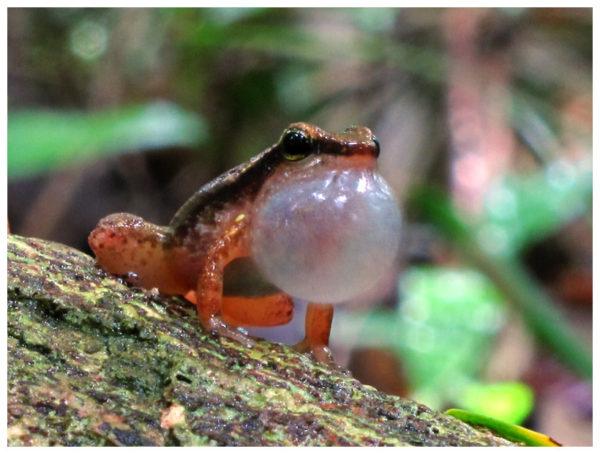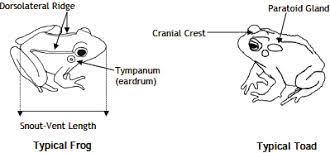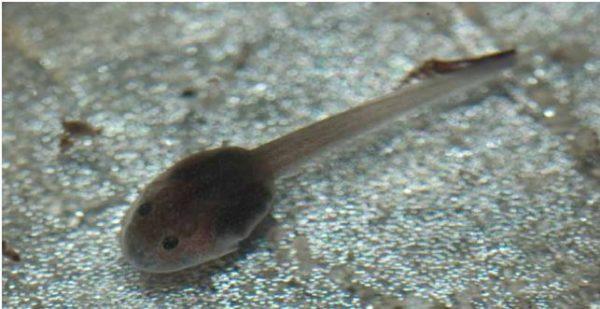Scientific Classification
Kingdom – Animalia
Phylum – Chordata
Class- Amphibia
Order – Anura
Family – Aromobatidae
Genus – Anomaloglossus
Species- A. Kaiei
Fun Fact – Aromobatidae is a family of frogs which are native to Central and South America. They can sometimes be referred to as cryptic poison frogs.

Photo of Kaie Rock Frog. Photo Source: https://uk.inaturalist.org/taxa/64749-Anomaloglossus
Description

Photo depicting snout-vent. Photo Source: https://edis.ifas.ufl.edu/pdf%5Carchived%5CUW%5CUW210%5CUW210-16318054.pdf
Kaie Rock Frogs are relatively small frogs. Males have a maximum snout-vent length of about 19 mm and females 20 mm.
Males and females differ in size and colouration, with males having a cream-coloured belly (as opposed to females’ orangish yellow abdomen) and a light pink throat with melanophores (pure orangish yellow in females).
A wide black band extends from the tip of the snout laterally around the body and above the vent, a thin, white, partly broken dorsolateral stripe above this band, extending from the posterior edge of orbit to the vent. Upper lip bar dirty white with a few white and light blue dots. Flank same colour as the upper lip. Chin same colour as upper lip; throat and chest medium pink, belly cream stippled with melanophores; underside of the thigh and shank creamy yellow. Iris metallic reddish bronze.
Reproduction

Tadpole of Kaie Rock Frog. Photo Source: file:///C:/Users/User/Downloads/A_New_Species_Of_Colostethus_Anura_Dendrobatidae_W.pdf
Males are territorial and can be observed calling from on the ground or from elevated sites (e.g., boulders), mostly in the morning and after rains. Courtship and ovipositioning behaviours are unknown. However, a male carrying a tadpole has been recorded (a common behaviour among aromobatids). Furthermore, females of this species can provide the tadpoles with trophic eggs.
Trophic eggs – are unfertilized eggs that are produced by the females to serve as nutrition for the young tadpoles.
This appears to be a supplement rather than an essential part of their nutrition. Nevertheless, this behaviour probably allows the tadpoles to speed up their development (advantageous in presence of predators or if there is a risk of desiccation) and may lessen cannibalism among the tadpoles.
Habitat

Kaieteur National Park. Photo Source: https://www.thousandwonders.net/kaieteur+national+park
Kaie Rock Frog is native to Guyana where it is known for the Kaieteur National Park and the Pacaraima Mountains. However, as it is found along the Guyana–Brazil border, it is also possibly present in Brazil. They can be spotted from disturbed forests, with one specimen found at the savanna edge. It is a terrestrial, diurnal (of the day) frog, without close association with bodies of water.
Diet
The diet of these frogs is not exactly known but from observation, they are said to be omnivorous. They usually feed on conspecific eggs.
Due to exploitative activities carried out in their habitats, these frogs have now become endangered.
References:
- file:///C:/Users/User/Downloads/A_New_Species_Of_Colostethus_Anura_Dendrobatidae_W.pdf
Discover more from Things Guyana
Subscribe to get the latest posts sent to your email.







